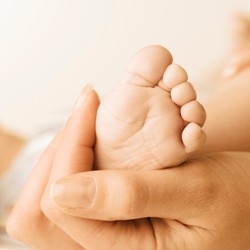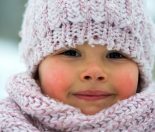Chilblains can be a pretty miserable winter ailment. This article discusses the causes, prevention and treatment of chilblains.
What are chilblains?
Chilblains are painful, burning, itching and swollen areas that occur when temperature changes take place from cold to hot. Normally chilblains are found on the extremities of the body – on the hands, feet and heels, but can also affect the face, nose and earlobes. Chilblains are quite common, especially in winter. They are more common in children and in the elderly.
The problem occurs when the small blood vessels in the skin become inflamed. Firstly, the amount of blood travelling to cold hands and feet drops due to constricted blood vessels, and then, when the body rewarms, fluid from expanding blood vessels can leak out of the vessels and into the surrounding tissue and cause pain and swelling.
Chilblains often appear several hours after being exposed to cold.
Why chilblains happen in some people and not in others is a mystery – though there is a family link, so if you suffer from them there is a higher chance your children might also.
In children, chilblains may occur each winter for a couple of years and then disappear completely. They can also appear on the wrists of babies.
Signs and symptoms of chilblains
Chilblains can appear on the:
- fingers, toes, heels, face, nose, earlobes
- wrists of babies
- thighs of horse riders
They cause:
- Burning, itching skin
- Swelling
- Pain or tenderness
- Redness or purpleness in colour
- Blisters or ulceration
- Possible infection in ulcerated area
Treatment for chilblains
Generally, chilblains will heal themselves after one or two weeks.
See a pharmacist for special creams you can purchase to help ease the pain, itching and swelling of chilblains.
If the problem is recurring or chilblains become infected, visit your doctor. Medical treatment may involve the use of a steroid cream or medication to improve circulation.
Blood tests can detect any abnormalities in body protein that can be linked to this condition.
Conditions that contribute to chilblains:
- Problems that slow the blood-flow like diabetes and smoking
- Diseases of the connective tissue like lupus erythematosus or Raynaud
- Poor nutrition
- Hormonal changes
Risks & complications of chilblains
- Persistence – some chilblains can last for months
- Recurrence each winter – some people continue to have recurring chilblains throughout life
- Infection – ensure any infected or ulcerated areas are kept clean and dressed. Seek medical attention if healing is not taking place as you may need antibiotic treatment
- Some drugs like heart medication beta-blockers can trigger chilblains as they work to constrict blood vessels. Let your doctor know if you are experiencing such side-effects
What can I do to prevent chilblains?
- Keep children warm in cold weather – especially their hands and feet covered with gloves and socks
- Get children to wear a woolly hat in cold weather – keeping the head and feet warm is very important in children to help maintain body temperature in the cold. And remember babies quickly lose body heat out the top of their head
- Ensure shoes fit properly as poorly fitting shoes may trigger irritation and then a chilblain. Bunions, corns and calluses can all trigger a chilblain
- If you or your child have become really cold, warm up slowly rather than using hot water bottles on the body or sitting too close to the heater. Chilblains can be triggered by putting cold hands or feet directly onto a heater to warm up
- Get your child to exercise a little and warm up before going out into the cold
- Don’t let your children scratch or rub chilblains, as this can aggravate them
- Use soothing lotions such as calamine
- Smoking contributes to chilblains – get advice and support to quit smoking
- A healthy diet and regular exercise also help protect against chilblains by improving the circulation
- See a naturopath or homeopath who will be able to recommend suitable alternative medications
Useful articles
For further information from Kiwi Families on the role of the Naturopath, click here
For great advice on Nutrition for all the family, visit the articles of our expert Fiona Boyle








I have found the cut onion placed on the hot spot will cool the heat, and calms things down somewhat. Also good on stings and rash.
Thanks!!